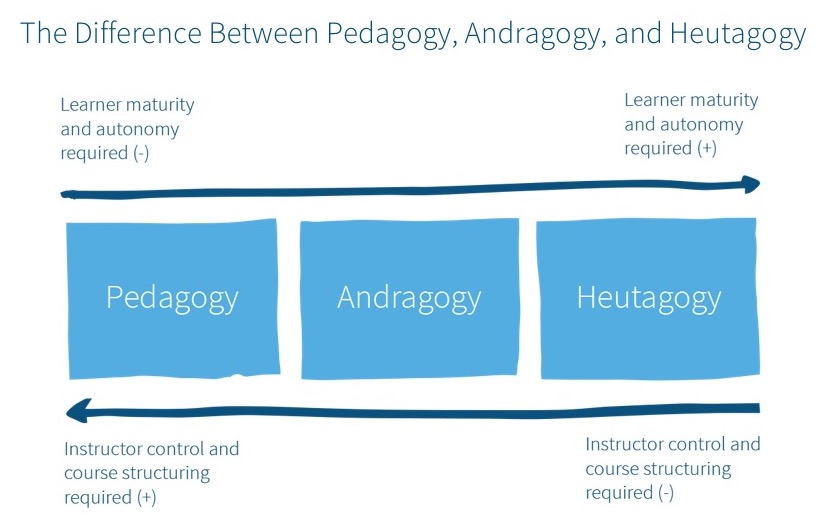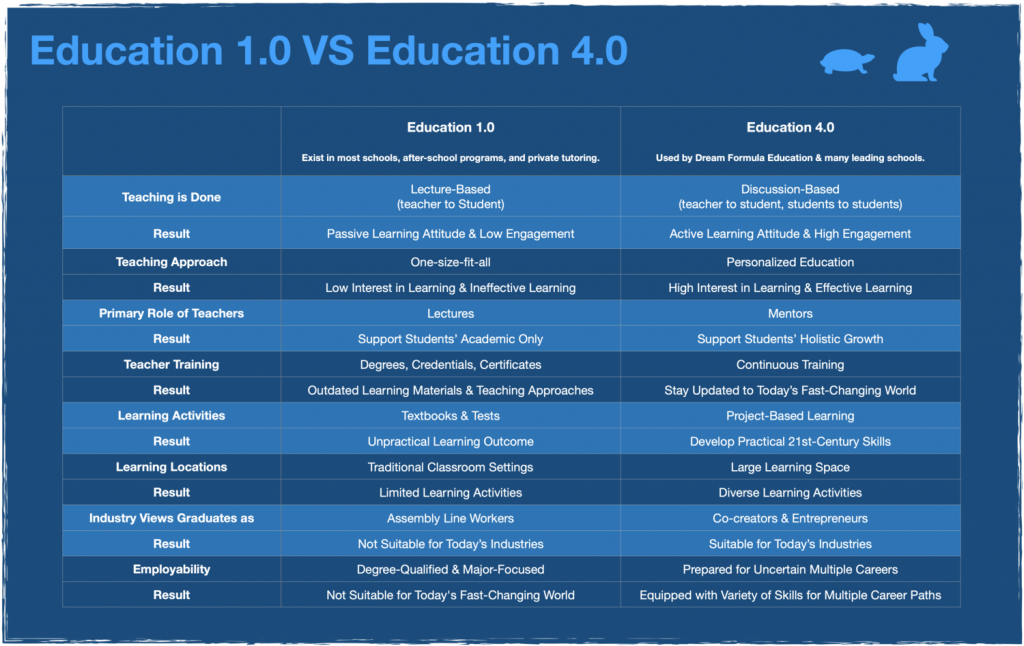Digging Deeper into Web 1.0, 2.0 & 3.0
(Week 3: Post 1)
“The web influences people’s way of thinking, doing and being, and people influence the development and content of the web. The evolution of the web from Web 1.0 to Web 2.0 and now to Web 3.0 can be used as a metaphor of how education should also be evolving, as a movement from Education 1.0 toward that of Education 3.0. The Web, Internet, Social Media, and the evolving, emerging technologies have created a perfect storm or convergence of resources, tools, open and free information access.”
Jackie Gerstein

Education in terms of Web 1.0, 2.0 & 3.0
To be honest, before Arkin, Christopher, Rae, and Kat presented on Web 1.0, 2.0 & 3.0, I didn’t really have a good understanding of how the web has evolved into what it is today. (If you are wanting a quick overview of Web 1.0, 2.0, and 3.0, check out this reading the group provided.) Sure, growing up at the same time as the web was, I knew that there were different stages and I lived through them, however, I wasn’t really sure what went where and how the levels were classified differently. I also appreciated a throwback of my younger years to one of the readings they provided from The Canadian Encyclopedia: Internet in Canada. So, let’s take a quick summary tour through each version of the Web and how we can apply that to the evolution of education, using Jackie Gerstein’s metaphor that is posted above.
If Web 1.0 was applied to education, I would picture it to be very much like Little House on the Prairie, where students of all grades are in a one-room schoolhouse learning from the same teacher. Traditional rows, chalkboards, notebooks, and desks with inkwells would probably be present. Gerstein explains that Web 1.0 is very much focused on the behaviorist approach to learning, focusing on the three R’s—Receiving (by listening to the teacher), Responding (studying, taking notes, answering questions, doing worksheets), and Regurgitating (taking the same assessments, doing the same work, etc. as all of the other students). In Web 1.0 in education, teachers would be the holders of knowledge, and all of the students would be treated with the same one-size-fits-all mentality. Overall, Web 1.0 in education would largely emphasize the teacher’s presence as being the knowledge keeper and passing information down a one-way avenue. Although it sounds very traditional, like one-room schoolhouses, this model is still the most predominant one used in today’s classrooms according to Gerstein.
With the emergence of Web 2.0 in education, we see more interactivity amongst all parties, as well as between users themselves. In Web 2.0 students are able to do more than solely access information, but they can now directly interact with what’s out there by commenting, creating their own content, sharing, and connecting via social networks with the emergence of Social Media. Web 2.0 has a more progressive a humanist approach to learning and focuses on the three C’s: communicating, contributing, and collaborating. Web 2.0 in education involves using: podcasts, blogs, social media and bookmarking, and other participation technologies. Although it seems pretty different from Web 1.0, Web 2.0 still follows the same framework as Web 1.0 as educational frameworks have not shifted or changed much in this time. Web 2.0 takes on a constructivist approach to learning, where the learner is actively collaborating with the world around them.
Lastly, Web 3.0 moves towards students being in the driver seat of their own learning vehicles (of course, with some of the elements of Web 1.0 and 2.0 still). Web 3.0 focuses on a learning theory that we haven’t discussed thus far in class (or that I can remember at least) until Rae introduced us to Heutagogy. Web 3.0 delivers relevant, networked, and interactive content where students are provided with “richer and more relevant experiences” (Gerstein, p. 90). So again, Web 3.0 focuses on three C’s (although much different than the three C’s of Web 2.0): connectors, creators, and constructivists.

Impacts of Shifting to Web 3.0 in Education
Back to Postman’s article, we read earlier on in the course, he talks about how every new technology brings advantages and corresponding disadvantages. After my maternity leave, I moved schools from one community to another. Although I was still teaching in the same grades, there were a lot of differences in terms of educational technology that weren’t equitable between both schools. In the reading provided, Disaster Capitalism, Rampant EdTech, Opportunism, and the Advancement of Online Learning in the Era of COVID-19, the authors raise concern that:
Educational technology encourages the privatization of public education as it influences design, management, and delivery. That is the functionality of platforms and applications shapes and constricts engagement with curriculum and students. Concomitantly, EdTech invites privatization in education, as the ideas, techniques, and values of businesses are adopted (efficiency, accountability, and managerialism). (p. 6)
We can see that some types of students and teachers are privileged and disadvantaged by shifting to Web 3.0.
Some of those who are privileged are those:
- With access to current technology and adequate WIFI,
- Who subscribe to society’s dominant discourses,
- Who are self-determined or self-driven,
- Who have colleagues and communities on board with collaboration,
- With vast social networks, and,
- Who have more funds available to them.
Some of those who are disadvantaged, are those:
- Who are living in poverty,
- Who do not know how to collaborate, or have never had an opportunity to engage in it,
- Who do not have access to current technology or WIFI,
- Who have exceptionalities,
- Who are LGBTQ2+.
- Who are part of a vulnerable population,
- Who have oppositions to technology because of religion, etc.,
- Who have storage, privacy and data concerns,
- Who work under school divisions with strict user guidelines and policies, and,
- Who have cultural traditions, such as but not limited to, oral tradition, storytelling skills, land-based learning, talking circles, etc.
Shifting to Web 3.0 focuses highly on a model of collaboration. Much like Janelle mentioned in her most recent blog post, collaboration in post-secondary has been a common theme throughout all of the courses, however, it isn’t something that is prioritized in elementary schools. In a model the depends highly on collaboration, I think that we need to do a better job teaching people how to collaborate as educators, and what true collaboration looks like. In my experience when collaborating with colleagues, it sometimes was a one-way street, therefore, the act of true collaboration wasn’t happening. Work smarter, not harder is something that I always have to remind myself. It takes a village to raise kiddos (it really does), so I am not sure why collaboration isn’t more emphasized in all of our school communities.
Making Connections & Gathering Feedback
Again, thanks so much for stopping by! Please feel free to either leave a general comment, a connection that sparked your memory, questions that you may have, or answer one or more (if you so choose) of the question prompts I have below (do not feel obligated to answer them all!).

- Can you think of any other examples of those who are privileged or disadvantaged by Web 3.0?
- How has 1.0, 2.0 or 3.0 evolved in your teaching or classroom over your teaching career thus far?
- What are some challenges you think you will be faced with in your teaching or classroom with the shift to Web 3.0?
- If you had to choose one Web (1.0, 2.0 or 3.0) in your teaching or classroom, which one would you choose and why?
- With the emergence of Web 4.0, how do you see it impacting your current teaching or teacher support role?

Thanks Kelly,
The last graphic on your post answers my question about what we think Education 4.0 would look like. I am often amazed about the technological advances that our society has made. I think its crazy that 20 years ago, people were just being introduced to texting and other capabilities of smartphones. I’m curious about what will happen in the next 20. I am also aware that just because the tech exists, doesn’t mean is accessible and usable for the vast majority of the population. More tech means a greater digital divide! Thanks for the engaging post!
Darcy, the infographic was something that I had never come across before until now. I guess I wasn’t really looking that hard either, but it was something that answered a lot of my questions in a short amount of time. I too think that technology has come such a far way in such a short amount of time. I don’t even think we could explain T9 texting to kiddos these days, and for them to have any idea what we were actually talking about, let alone time to experience it. I’m not sure what will come in the next 20 years, and maybe we will be in flying cars like we were supposed to be in 2000. You’re also right, just because there have been advancements in technology doesn’t mean that the vast majority of the population will be able to use it, own it, or experience it. The more technology evolves the greater the digital divide happens to be. I hope there is something we can do like a lending library, where people can get more equitable access to technology.
Kelly, I also appreciated the graphic you included at the end of your post. Like you, I had really no idea how the internet developed. I remember my sister coming home from high school one day talking about how if we got a computer we could do this magic thing where we used the internet to mail a letter. I distinctly remember thinking, “Oh this is nonsense. No one will ever get this fancy technology.” If 12 year old me only knew… so crazy! When I look at the Web 4.0 graphic, it is less daunting. These are things — high engagement, holistic learning, project based learning — that are happening in classrooms at school, and we are seeing excellent results, and engaged kids.
Isn’t that funny how we thought the internet was never going to evolve back in the day, Janeen? If I would have known then what I know now, I would have bought some major stocks in Microsoft and Apple, just saying! But yes, the infographic did a good job to really lay things out for me. When the group presented and laid out each Web (1.0, 2.0, and 3.0) it was easier to understanding. But when I came across Web 4.0, I was like what the heck! I thought there were only 3. Boy was I wrong. Web 4.0 appears to be the polar opposite from Web 1.0 in the infographic and with everything in education the pendulum swings. Thanks so much for popping in, I’m glad the infographic was useful!
Wow, you are flawless, intelligent, and bright. briansclub cm